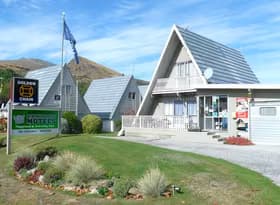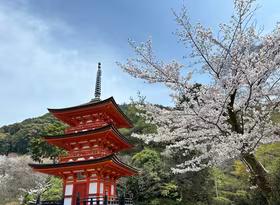A chance to supercharge the night-time economy
Take a stroll through the Rembrandtplein (Rembrandt Square) in Amsterdam during daylight hours and you might find yourself gazing in quiet contemplation at the statue of the Dutch master painter, Rembrandt van Rijn, who gave the square its name. But after sunset the square’s main attractions come to life, with the Rembrandtplein’s brightly lit clubs, cafes, and bars making it synonymous with Amsterdam’s flourishing night-time economy.
Who’s in the club?
The night-time economy is generally defined as businesses that do the majority of their trading between 6pm and 6am. These businesses encompass core sectors such as cafes, restaurants, takeaway food services, liquor retailing, performing arts, sports clubs, movie theatres, and other recreation activities. A broader definition can include businesses that support the night-time economy such as waste collection services, non-core retailing, public safety services, law enforcement, and public transport.
For many years, cities around the world have been looking at ways to enhance their night-time economy with mixed success. The incentives are obvious. Drawing on the agglomeration benefits enjoyed by population centres, developing the night-time economy can boost small business profitability, help swell the coffers of local government and, done right, boost the wellbeing of the local population. A key benefit can be the opportunity to revitalise urban areas that would otherwise become deserted at night. Examples include empty foyers of office buildings being used as gallery or exhibition spaces for a cultural institution during the evening, or a local café that closes at 4pm allowing an emerging chef to launch a pop-up restaurant in the evening. Online platforms such as Altspc in Sydney connect businesses with unused or vacant space to freelancers, start-ups and other small to medium businesses that need it.
But these opportunities bring with them challenges. Nocturnal economic activity is often perceived to be associated with alcohol consumption and the bad behaviour that seems to accompany it. Related to this perception is the need to balance the interests of residents, businesses and their patrons, transport providers, law enforcement agencies, and local government.
Night-time economy a $10b sector in New Zealand
In 2019, Infometrics estimates that New Zealand’s core night-time economy was worth almost $10b in economic activity and supported over 180,000 jobs (7% of total employment). However, even as activity in New Zealand’s regions and cities begins to gather momentum following the Level 4 lockdown, we expect almost 45,000 job losses in businesses operating in the night-time economy by next March. The importance of encouraging people back into our towns and cities has never been higher, with businesses, mayors, councillors, and central government ministers looking for ways to give local tourism and hospitality industries a shot in the arm. What can we learn from the experiences of cities such as Sydney, New York, London and Amsterdam?
Getting the party started (again)
Looking at what cities overseas have done, a key theme that emerges is that the night-time economy can be facilitated by a range of activities, but they must be implemented in an integrated fashion.
- Funding is important. With New Zealand’s border likely to remain largely closed for some time, the emphasis is on stimulating domestic spending. Central government has stumped up over $100m in support:$10m to save jobs and protect incomes in the domestic events sector, a $70 million Creative Arts Recovery and Employment Fund, and a $60 million Cultural Innovation Fund – which is on top of the Government’s wage subsidy programme.
- Communication and promotion also have an important part to play. Supported by strong local branding, city and district councils can mobilise their communication channels to publicise events and activities, particularly for out-of-towners who might not be familiar with the social media and other channels that locals are familiar with.
- Regulations and licensing can be a means for local authorities to facilitate and innovate, although support from central government is often needed to make changes. Liquor license application processes can be simplified, new types of licenses have been created for pop-up bars, exhibitions and events, and licensing options have been developed for micro-breweries and small distilleries to allow beer, cider, and spirit producers with a producer/wholesaler licence to sell their own products to the public for on-premises consumption like a bar.
- Diversifying the offerings of the night-time economy to include activities that don’t necessarily involve alcohol can be an effective means to suppress its more unsavoury aspects. Drinkers and revellers tend to behave better when their numbers are mixed with the more sober appreciators of the arts and other cultural events. To that end, cities have extended opening hours of galleries, museums, libraries, and gyms, and have introduced or extended late night shopping.
- Urban design can be functional and aesthetic, making public spaces and streets attractive, safe and interesting. These designs can include improving or extending CCTV networks and street lighting. BruumRuum, an interactive lighting installation at the Plaza de Glories in Barcelona, transforms a standard plaza by day into an engaging public space at night. Sensors respond to ambient noise and the sounds of passers-by with the lighting elements changing colour in response.
- Wayfinding signage/technology can support public safety and ensure late night behaviour does not get out of hand. This support could include the use of interactive kiosks and smart totems, providing real-time information, orientation maps and directional information.
- Personnel such as taxi rank facilitators have been introduced in some cities to mitigate potential bad-behaviour hot spots. In Amsterdam, trained social workers (called Square Hosts) encourage patrons to take loud voices inside and defuse potential conflicts before the police are called in.
- Transport and parking need to be well integrated to ensure people can move around and return home as safely and as quickly as possible. Changes might include increased taxi rank capacity, dedicated night bus stops, a linked radio network between venues, changed traffic sequences to manage pedestrian congestion, bus and taxi rank marshals, public help points, signs to public transport, and more public transport information. Safe pick-up and drop-offs have been used in some cities, while in others ‘No Stopping’ zones have been replaced by ‘5-minute parking’ zones so passengers can enter and exit vehicles safely. On-demand buses which allow customers to book transport from or near their home to a local transport hub or other centers have been used as part of the transport mix. Private vehicle access and parking is also important in attracting the demographic groups required to achieve diversity in night-time precincts, such as families and older citizens. Consideration also needs to be given to night-time workers finishing shifts late at night or early in the morning who need to have public and private transport options to get home.
Balancing the often-competing interests of residents, night-time economy businesses, and their customers is also a constant challenge. Licensing and regulation have been used to manage opening hours, alcohol consumption, patron numbers, and noise. Examples include: no new patrons after 3.00am on Friday and Saturday nights (one-door policies), restrictions on certain drink types (including no high-alcohol shots) after 12.00am, banning or limiting Happy Hours, ceasing the service of alcohol 30 minutes prior to closing time, and a patron code of conduct.
Noise management can incorporate acoustic glazing, sound limiters, acoustically treated ventilation, an ‘acoustic lobby’ at entry/exit points, banning external amplified music, restrictions on late trading for outdoor areas, and setting a maximum noise level. A more structural option involves establishing designated precincts for night-time activities and implementing planning controls to limit residential developments close to these precincts, as well as dispersing night-time activities across cities to avoid overconcentration in a given locality.
A complex, but exciting, opportunity
The night-time economy is nothing new. Nor is developing it an easy win. To get it right and stimulate the local night-time economy takes time and careful planning. But New Zealand can learn much from the successes and setbacks of its contemporary pioneering cities overseas.


















